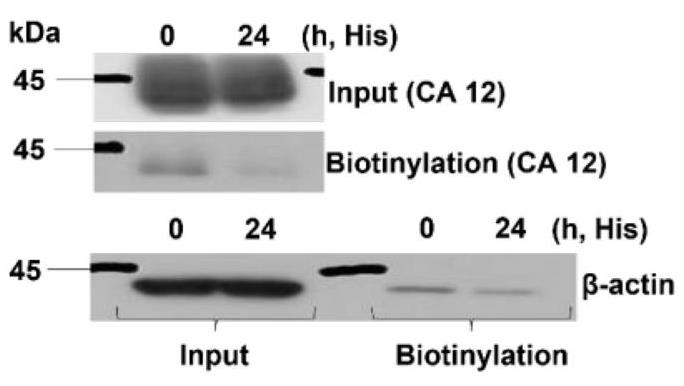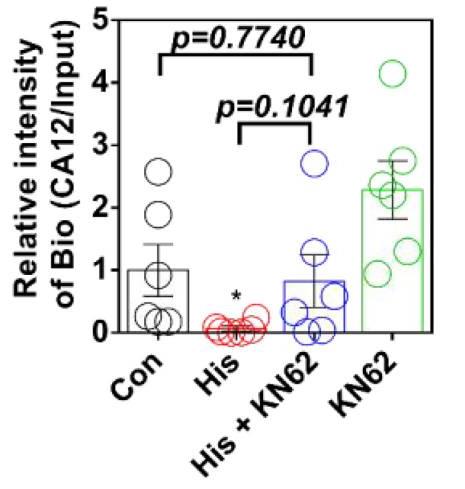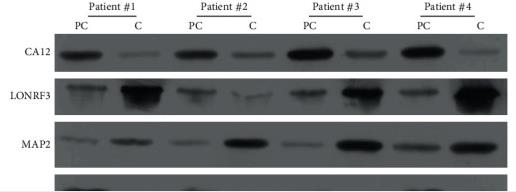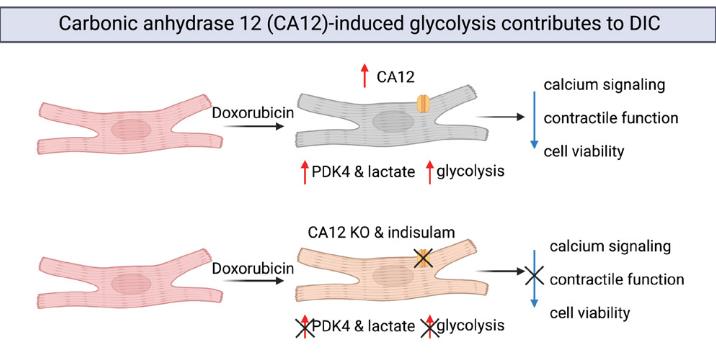Recombinant Human CA12 protein(Met1-Gln291), His-tagged
| Cat.No. : | CA12-261H |
| Product Overview : | Recombinant Human CA12 (NP_001209.1) (Met 1-Gln 291) was expressed in HEK293 with a C-terminal polyhistidine tag. |
| Availability | April 20, 2025 |
| Unit | |
| Price | |
| Qty |
- Specification
- Gene Information
- Related Products
- Case Study
- Application
- Download
| Species : | Human |
| Source : | HEK293 |
| Tag : | His |
| Protein Length : | 1-291 a.a. |
| Form : | Lyophilized from sterile PBS, pH 7.4. Normally 5 % - 8 % trehalose, mannitol and 0.01% Tween80 are added as protectants before lyophilization. |
| Bio-activity : | Measured by its esterase activity. The specific activity is >40 pmoles/min/μg, as measured with 1 mM 4-Nitrophenyl acetate and 2.5 μg enzyme at 400 nm in 100 μL of 12.5 mM Tris, 75 mM NaCl, pH 7. 5. |
| Molecular Mass : | The recombinant human CA12 consisting of 278 amino acids and has a calculated molecular mass of 31.6 kDa. As a result of glycosylation, the recombinant protein migrates as an approximately 40-45 kDa protein in SDS-PAGE under reducing conditions. |
| Endotoxin : | < 1.0 EU per μg of the protein as determined by the LAL method |
| Purity : | > 97 % as determined by SDS-PAGE |
| Storage : | Samples are stable for up to twelve months from date of receipt at -20°C to -80°C. Store it under sterile conditions at -20°C to -80°C. It is recommended that the protein be aliquoted for optimal storage. Avoid repeated freeze-thaw cycles. |
| Reconstitution : | It is recommended that sterile water be added to the vial to prepare a stock solution of 0.2 ug/ul. Centrifuge the vial at 4°C before opening to recover the entire contents. |
| Gene Name | CA12 carbonic anhydrase XII [ Homo sapiens ] |
| Official Symbol | CA12 |
| Synonyms | CA12; carbonic anhydrase XII; carbonic anhydrase 12; HsT18816; CA-XII; carbonic dehydratase; carbonate dehydratase XII; tumor antigen HOM-RCC-3.1.3; CAXII; FLJ20151; |
| Gene ID | 771 |
| mRNA Refseq | NM_001218 |
| Protein Refseq | NP_001209 |
| MIM | 603263 |
| UniProt ID | O43570 |
| ◆ Recombinant Proteins | ||
| CA12-1456C | Recombinant Cynomolgus CA12 protein, His-tagged | +Inquiry |
| Car12-7848R | Recombinant Rat Car12 protein, His-tagged | +Inquiry |
| CA12-1154M | Recombinant Mouse CA12 Protein, His (Fc)-Avi-tagged | +Inquiry |
| CA12-805H | Recombinant Human CA12 Protein | +Inquiry |
| CA12-7846H | Recombinant Human CA12 protein, His-tagged | +Inquiry |
| ◆ Cell & Tissue Lysates | ||
| CA12-3067MCL | Recombinant Mouse CA12 cell lysate | +Inquiry |
| CA12-3061HCL | Recombinant Human CA12 cell lysate | +Inquiry |
Case 1: Kim HJ, et al. J Enzyme Inhib Med Chem. 2023
Carbonic anhydrase 12 (CA12) plays a role in creating an acidic environment in cancer cells. To explore histamine signaling as an anti-cancer process, we looked at CA12 and related bicarbonate transporters. We found that histamine causes CA12 to mislocate in lung cancer cells and that this effect can be reversed with CaMKII inhibitors. Histamine boosts the expression of AE2 while lowering NBCn1 expression and activity. The acidification process is driven by internalized CA12, NBCn1, and enhanced bicarbonate efflux via AE2. Blocking protein movement with bafilomycin corrected CA12 and AE2 positions and reduced cellular acidity. Our findings suggest that histamine signaling may trigger an acidic environment by affecting CA12 and its associated transporters, playing a part in its anti-cancer mechanism in lung cancer cells.

Fig1. Surface expression of CA12 after His treatment in A549.

Fig2. The graph indicates the relative intensity of CA12 normalised by input CA12 and β-actin.
Case 2: Zeng J, et al. Oxid Med Cell Longev. 2023
Researchers are diving into congenital pulmonary airway malformation (CPAM) and have spotted some differentially expressed miRNAs, but what they actually do is still a bit of a mystery. By checking out lung tissues from CPAM patients, they performed various assays and found that the miR-548au-3p/CA12 axis plays a key role. miR-548au-3p seems to boost cell growth and cartilage formation in rat tracheal chondrocytes. It ramps up certain proteins like N-cadherin and reduces others like E-cadherin. Interestingly, CA12 acts as a predicted target for miR-548au-3p. When CA12 is overexpressed, it mimics the stopping effect of miR-548au-3p, while knocking down CA12 counteracts miR-548au-3p's influence on cell processes.

Fig1. Expression of CA12, LONRF3, MAP2, THBS1, and PPID at protein levels in lung tissues from CPAM and adjacent normal tissues.

Fig2. The effect of miR-548au-3p on differentiation of rat tracheal chondrocytes assessed with Alcian blue staining.
Human Carbonic Anhydrase XII (CA12) is crucial for converting carbon dioxide into bicarbonate ions and protons, helping to regulate pH and balance acids and bases. In research, recombinant Human CA12 (rhCA12) is used to investigate its enzymatic roles in processes like respiration and bone resorption. It's also examined in cases such as renal cell carcinoma, where CA12 expression might contribute to tumor growth through microenvironmental acidification. Researchers utilize rhCA12 in ELISA kits to measure the protein in biological samples, shedding light on its role in various diseases.
On the industrial side, rhCA12 serves drug discovery and cancer therapy development. The protein is produced in systems like Pichia pastoris and HEK293 cells, aiding in the formulation of therapeutics aimed at CA12's activity. The production process helps create standardized research reagents, supporting reliable scientific studies. Additionally, rhCA12 is used in developing diagnostic tools and antibodies, crucial for analyzing its function and related conditions in different biological contexts.

Fig1. CA12-mediated glycolysis contributes to doxorubicin-induced cardiotoxicity. (Chun Liu, 2024)
Not For Human Consumption!
Inquiry
- Reviews
- Q&As
Ask a Question for All CA12 Products
Required fields are marked with *
My Review for All CA12 Products
Required fields are marked with *
Inquiry Basket


